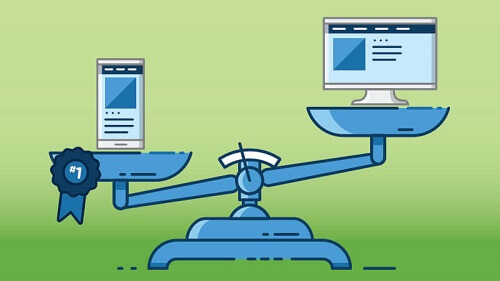How to Lower Bounce Rate in 8 Quick Steps
Ever wondered why your website does not rank on the first page on Google despite it being well-written? According to Google, most websites don’t rank well because they have a bad bounce rate. We answer the difficult questions so that you can optimise your site and change your rankings on Google. Our guide will allow users to turn the page on Google and increase their conversion rate. Moreover, you can find out why it’s important to keep the internet bounce rate low.

What is Bounce Rate?
In the realm of online marketing, it refers to the number of web page visits that click on the link to a website then subsequently decide to leave without viewing other pages on the site. Loosely put, the bounce definition represents the percentage of people that enter the website page and bounce back out for whatever reason. Google Analytics calculates the speed at which people land on a specific page then subsequently leave after that. This rating helps Google determine the effectiveness of the content on a page in answering a search query and converting the entry page as a doorway into the entire website and related pages. If a reader clicks on another web page on the same site, Google rates the number of times this happens to determine the exit rate of the entry page.
Difference between Bounce Rate and Exit Rate
Unlike the web page bounce rate, the exit rate of a page is calculated differently. It relates to the percentage of visitors who last for a certain period on a page then redirect from a particular page to a different inner page on the same site. When you rate website traffic, this is also a useful marker that Google uses to rank the entirety of a website. If you include too many links to different web pages on a landing page, that may count against it.
Here are some actions performed by visitors while on a webpage that constitutes a bad bounce rate:
- Clicking on the back button after landing on a particular page works against you.
- Typing a different URL after the landing page has loaded.
- Clicking on a different link to an inner page before finishing a session leads to a bad rating.
- If a page does not fully load as a result of a lost internet connection, it will affect your bounce rating.
Bounce Rate Formula
Understanding how the website bounce rate calculation is done is the first step to fixing the poor conversion rate of your website. The bounce rating of a website page is calculated using the aggregate number of visitors that leave a page divided by the total number of entrances on the page. This formula helps determine whether a website has a bad or good bounce rate by understanding which kinds of hits do Google Analytics track. But what is a good bounce rate? There are tons of platforms to check the engagement rate of your websites such as Bounce Rate Checker and Bounce Rate Google Analytics.
Listed below are percentages that determine whether a website has a good, average or what is considered a high bounce rate:
- A bounce rate range of 26% to 40% is deemed to be good, especially for content websites.
- 41% to 55% is the industry standard for an average bounce rate.
- 56% to 70% is rather lousy bounce rate.
- A percentage higher than 70 is a cause for concern and demands immediate attention.
How to Reduce Bounce Rate in WordPress
To understand how to lower the bounce online rate, you first have to know what is a high bounce rate. The overall website affects your bounce back rate, but here are the most common factors that affect the site negatively:
- Audio-visuals effects (music and video content)
- Pop-ups
- Content-heavy landing page
- Page speed/load time
Here are a few suggestions to improve your bounce rate benchmark:
- Reduce links that redirect to another page.
- Remove pop-up ads.
- Improve the content (answer the search query immediately).
- Clearly defined menu bar helps users navigate the website.
- Add a call-to-action.
- Make sure your page speed is good.
- Ensure that external links open in a new window.
- Adjust your content to fit mobile view without affecting the site’s usability.
Make Your Site Mobile-Friendly
Even though more people around the world are using mobile devices than computers nowadays, mobiles have a better bounce time rate than desktop. This fact highlights the need to optimise the content so that it’s mobile-view friendly. The responsiveness of a site to differently-sized mobile views is a marker for Google to calculate the conversion rate.

Conclusion
Your overall bounce rate should improve with the tips that we’ve discussed above. While the bounce-back rate is not the only criterion Google uses to rank a site, it plays a huge role. Your SEO techniques should aim at improving the retention of traffic and maintaining your position on the search engine. Thus, remain consistent in your content, and ultimately find a creative way of answering the search query than your competitor. It will pay dividends in the long run.
Do you have any additional steps to decrease bounce rate that you know? Leave a comment below so that we can discuss further.
To improve your website, download our quick and easy tips to Lower Bounce Rating.



